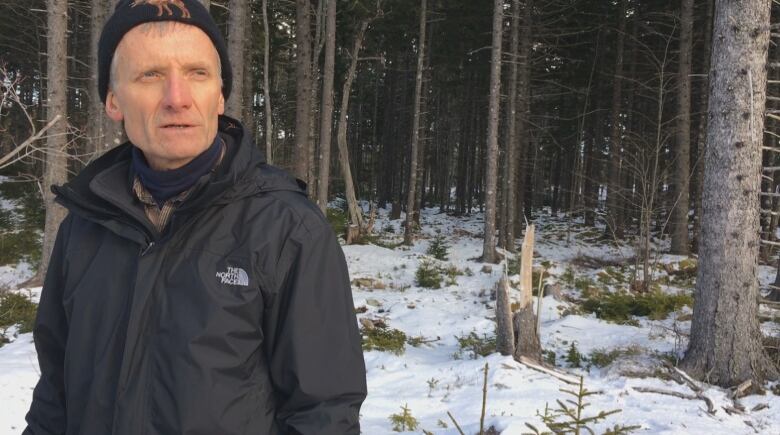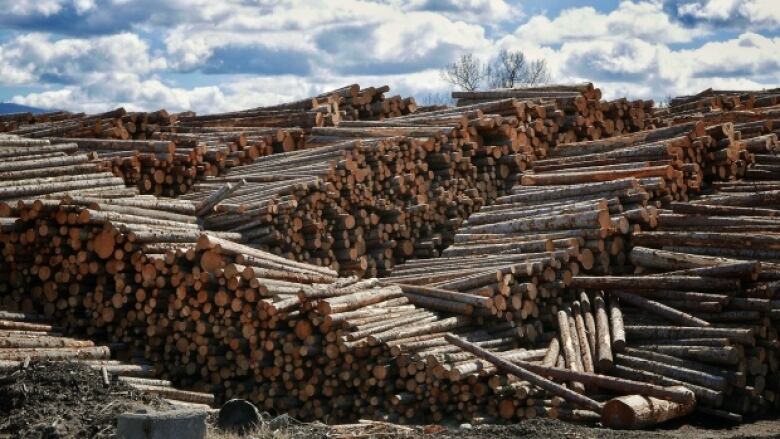Nova Scotia woodlot report looks beyond 'mining our forests'
Examination of industry in Finland highlights lack of data, organization, planning in Nova Scotia

Small woodlot owners mustbetter organizeif they want more clout in the forestryindustry, according to the co-author of a new report that urgesthe province to findnew markets and better trackthe inventory of trees in Nova Scotia forests.
DigbyCounty forester Harold Alexanderwas part of a group that travelled to Finland last year to look at why forestry there is booming and learn what lessons could be used to improve the industry in Nova Scotia.
A final report on the trip was completed last month and highlights avariety of issues. It foundtwo of the biggest differences between Finland and Nova Scotia arethe amount of power small private woodlot owners have in the Scandinavian country and how intensely that country monitors its forests.
"In Finland they know very accurately how much wood the forest is growing on an annual basis," said Alexander. "And if you're going to sustainably harvest the forest, that's very important information to know."

The study comes as concerns have been risingabout how much harvesting there's been on Crown land by logging companies and the ability for smallprivate woodlot owners to compete.
Nova Scotia hasn't been able to tap into the plethora of markets where Finland and other countries are doing business. Alexander said that isn't on account of ability, but rather a lack of dedicated efforts to develop those markets.
"The opportunity isthere, it's just in my view we're not ready to take advantage of that," he said.
Andy Kekacs, executive director of the Nova Scotia Woodlot Owners and Operators Association, has seen Alexander's report. He said having quality inventory data available to everyone would mean people know the ages, sizes, quality, health and other factors about the species of trees in their respective jurisdictions.
"That means they can plan in a pretty precise way what specific crops will be available at specific points in the future."
A need to organize
One of the major things holding back private owners in Nova Scotia is the lack of organization, said Alexander. The extensive organization efforts in Finland mean they can guarantee wood supply to the marketplace and are a major player in how things operate, he said.
There simply aren't enough regional groups in Nova Scotia,no provincewide umbrella organizationto cover them all and nocommon focus, said Alexander.
Getting organized has been a challenge in the past, said Kekacs, because of competing views and divergent philosophies. Despite that, many people seem to agree on the idea of growing valuable trees, milling them for high-value markets and using the residue at pulp mills, he said.
Taking a long-term view
It's getting there that's the challenge. As Alexander's report notes, it took Finland 50 years to developa booming industry that creates far more jobs, and produces more wood per hectare, moresustainably,thanNova Scotia.
Kekacs, like Alexander, believes change is possible. He also agrees the work must begin now and it requires a longterm view from government to maximize opportunities and resilience in the forest.
Developing new markets is vital because returns to landowners for direct sales of pulpwood and biomass are so low, he said. There is a need for markets built on the strength of larger, older and higher-value wood andsuch a forest would also benefit wildlife, recreation and other concerns.
"There's a happy coincidence and I'm skeptical of those, generally but there really is a happy coincidence between growing a big old forest and all the other values humans want," said Kekacs.

Alexander said the demand globally for forest products and market opportunities appear to be growing and that could mean economic stimulation for rural parts of Nova Scotia. But there isn't much of an effort right now to grow for quality, he said.
"If you add it all up, we don't know what our forests are capable of on the inventory side. We don't know what's out there in the forests. But what most of us see is it's not very good.
"It looks to us like we're mining our forests. We're cutting blocks of forests and we're not even looking back to see what's growing on those sites. We're assuming that nature is going to replenish on its own, and they don't take that risk in Finland."
(PDF KB)
(Text KB)CBC is not responsible for 3rd party content












_(720p).jpg)


 OFFICIAL HD MUSIC VIDEO.jpg)
.jpg)



























































































